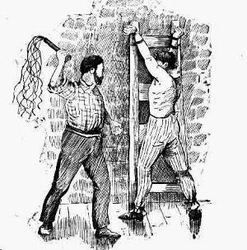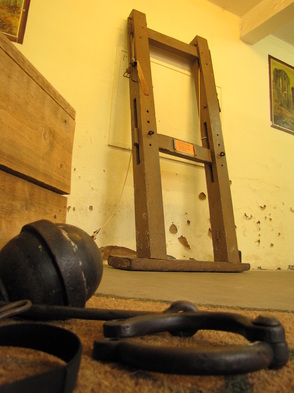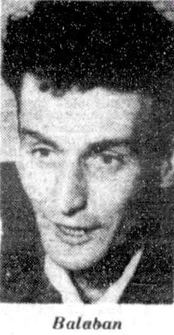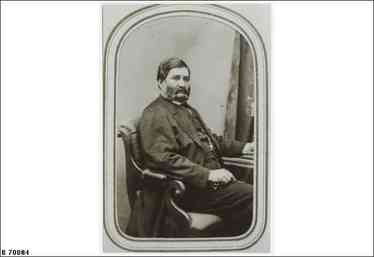| ON THIS DAY... 12th Dec 1883 On this day two young lads, Samuel Moyle (15 years) and John Haggerty (17 years) received the first part of their sentence. The two young men had committed separate, but identical crimes and both were sentenced by Justice Boucart. Part of their sentence included strokes of the lash, to be carried out on the same day at the Adelaide Gaol. They received their punishment on the morning of the 12th Dec. |
On the 16th August, Margaret Hayes (12 years) who lived in Willunga, left school and began to walk home. Samuel on seeing Margaret, followed the little girl from her school, for the express purpose of gratifying himself with her. He was quickly arrested and taken to court where Samuel pleaded guilty. His Honour stated that it was terrible to see a boy charged with such an offence, and even exclaimed that he was astounded. He pointed out that none the less, this boy had terribly injured this girl and in any other colony, the sentence would have meant death or Gaol for life. Instead he sentenced Samuel to 1 month in Gaol, 15 lashes and then Samuel was to be kept in the boys reformatory until 16 years of age.
John Haggerty
On the 15th Nov, Mary Brewster (23) of Quorn, had been taking a message to a neighbour when she stumbled across John. He grabbed her and after a severe struggle, he raped her.
Mary stated in court that she had seen John stop to give his horse a drink and when she got close to him, he had asked her the time. She replied she did not exactly know and hurried on her way. He quickly caught up to her and threw her down to the ground.
“Do you not have a conscience?” Mary cried out during the violent struggle “No” he replied. Once finished, John then got on his horse and rode off.
In the court her torn clothing, was produced. Her neighbour attested to the state Mary was in when she finally arrived at her house, and said her face, ear and wrist were bleeding.
The jury only took a few minutes to find John guilty, but did ask for mercy due to his age. Justice Boucart once more reminded John that in other Colonies, he would have been given the death sentence before he sentenced John to 5 years hard labour and 20 lashes.
| Sentence Carried Out On Weds morning, 12th December, in the presence of Mr Howell (Governor of the Gaol) and Dr Patterson (Colonial Surgeon), the strokes were given. These were administered, as often done so, by the executioner, Earle. Samuel was given the birch. “The castigation was administered on a tender part of the young scamp’s body, and he lustily yelled out as each stroke was given!” John, as he was older and his crime more violent, was given the cat-o-nine tails. Even before the first stroke was given, he started to howl and pray for mercy, which turned to shrill yells as each stroke was given. It was said “they could be almost heard as far as Bowden.” He was described as a man of ‘robust physique and possessing lungs of extraordinary power! He fainted part way through, but was soon brought back to consciousness with plenty of water. |
Written by Alison Oborn
© Adelaide Gaol Heritage
www.adelaidegaolheritage.com.au
Sources
http://trove.nla.gov.au/
Newspapers of the day
Drawing courtesy Sydney Evening News 1883




 RSS Feed
RSS Feed